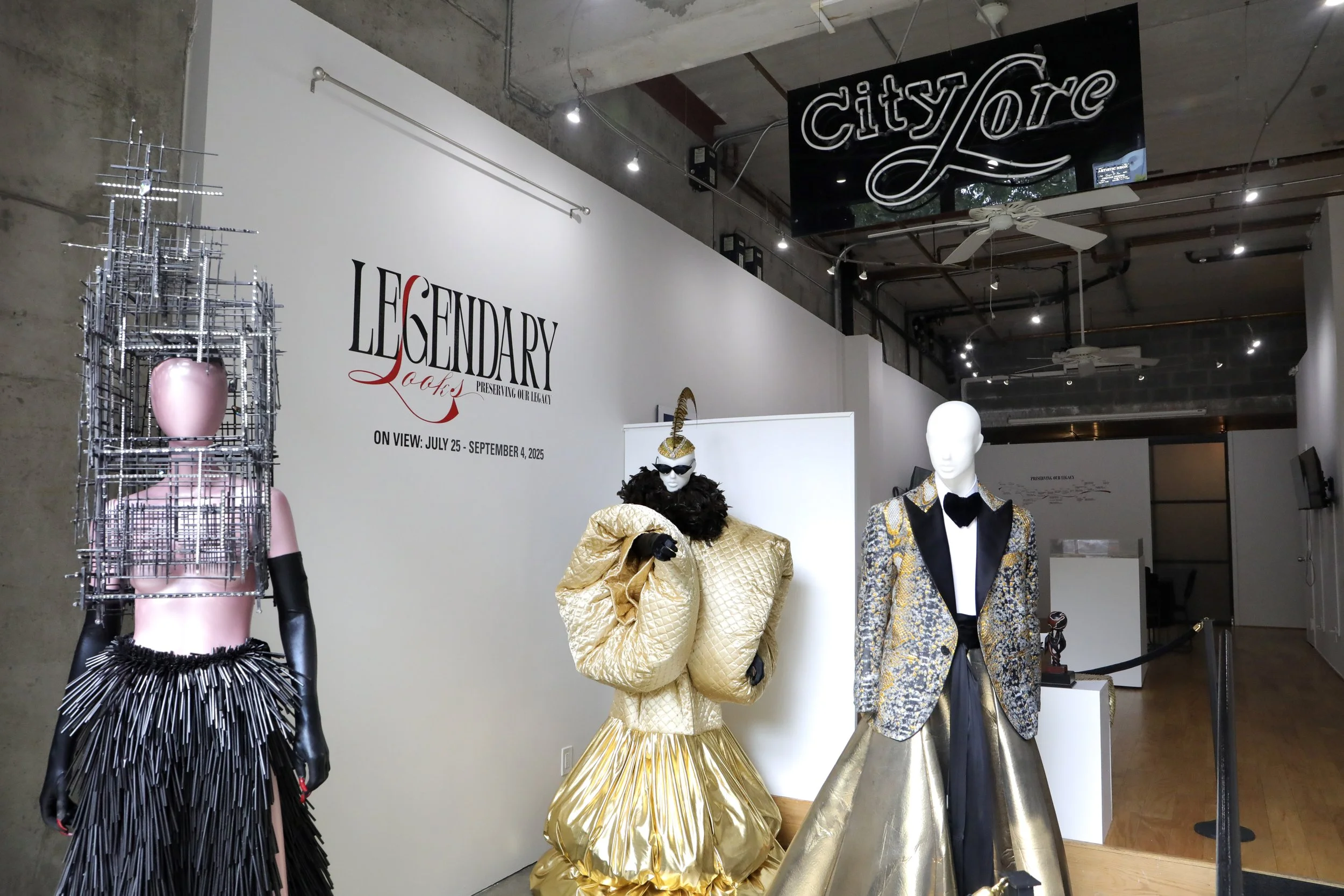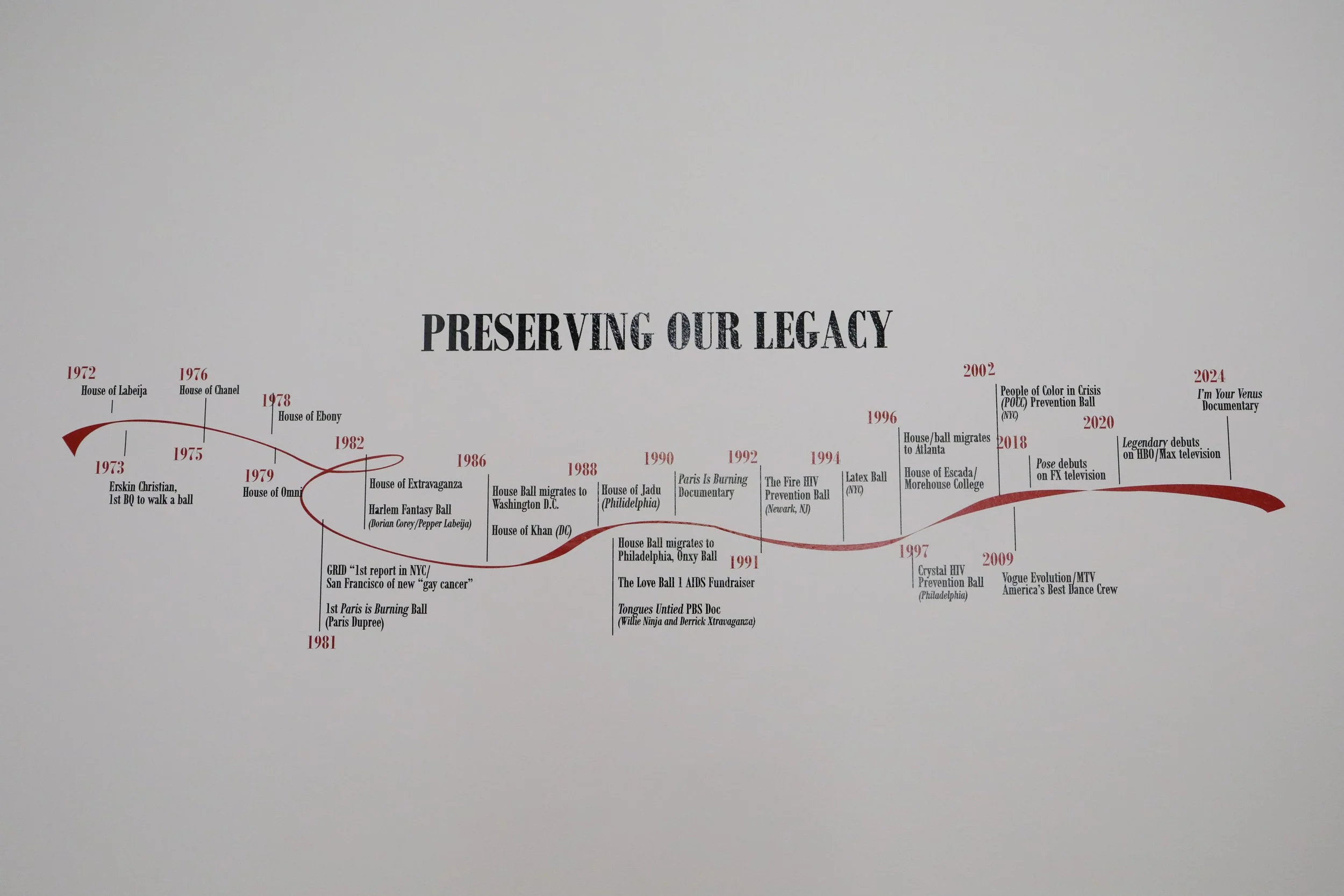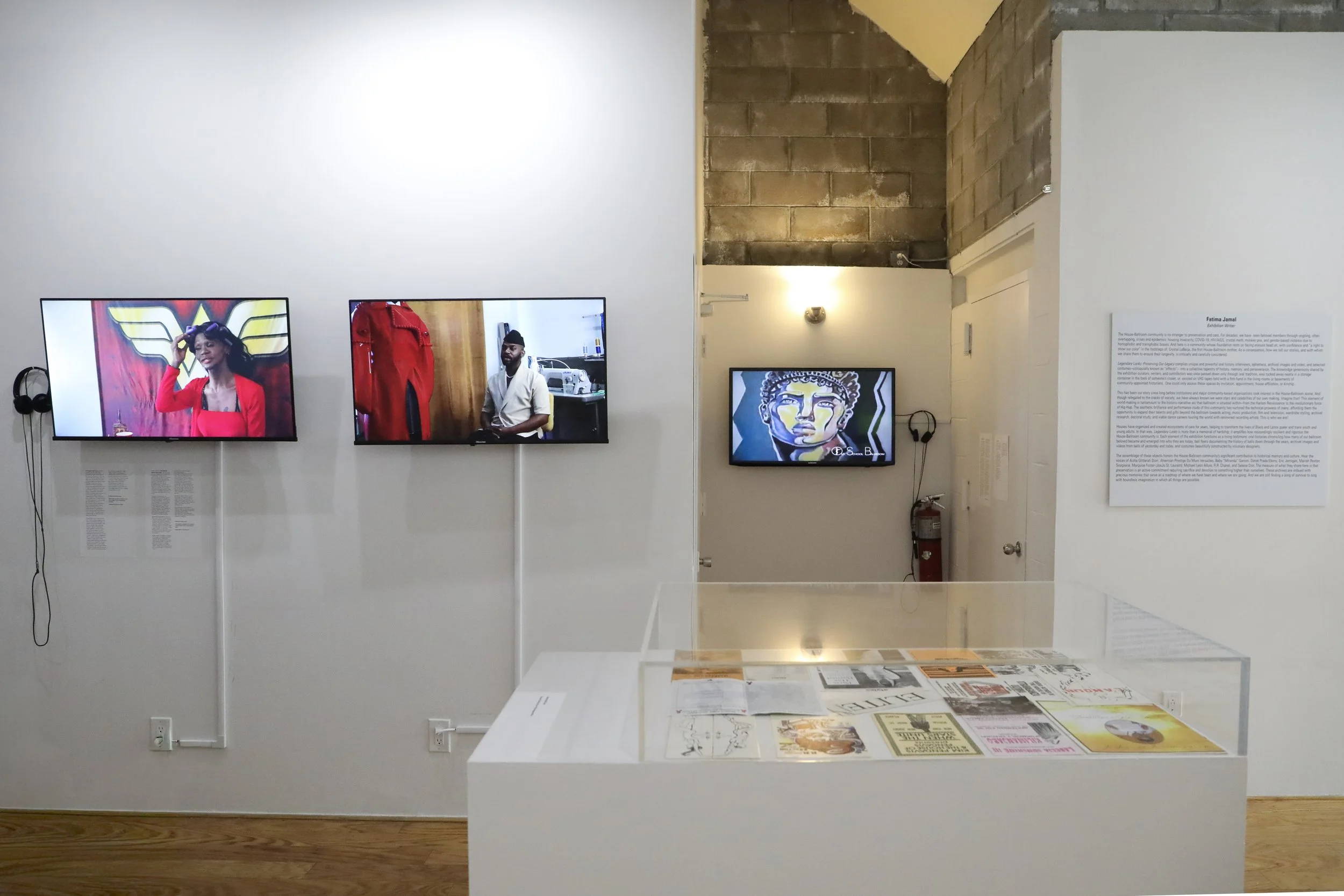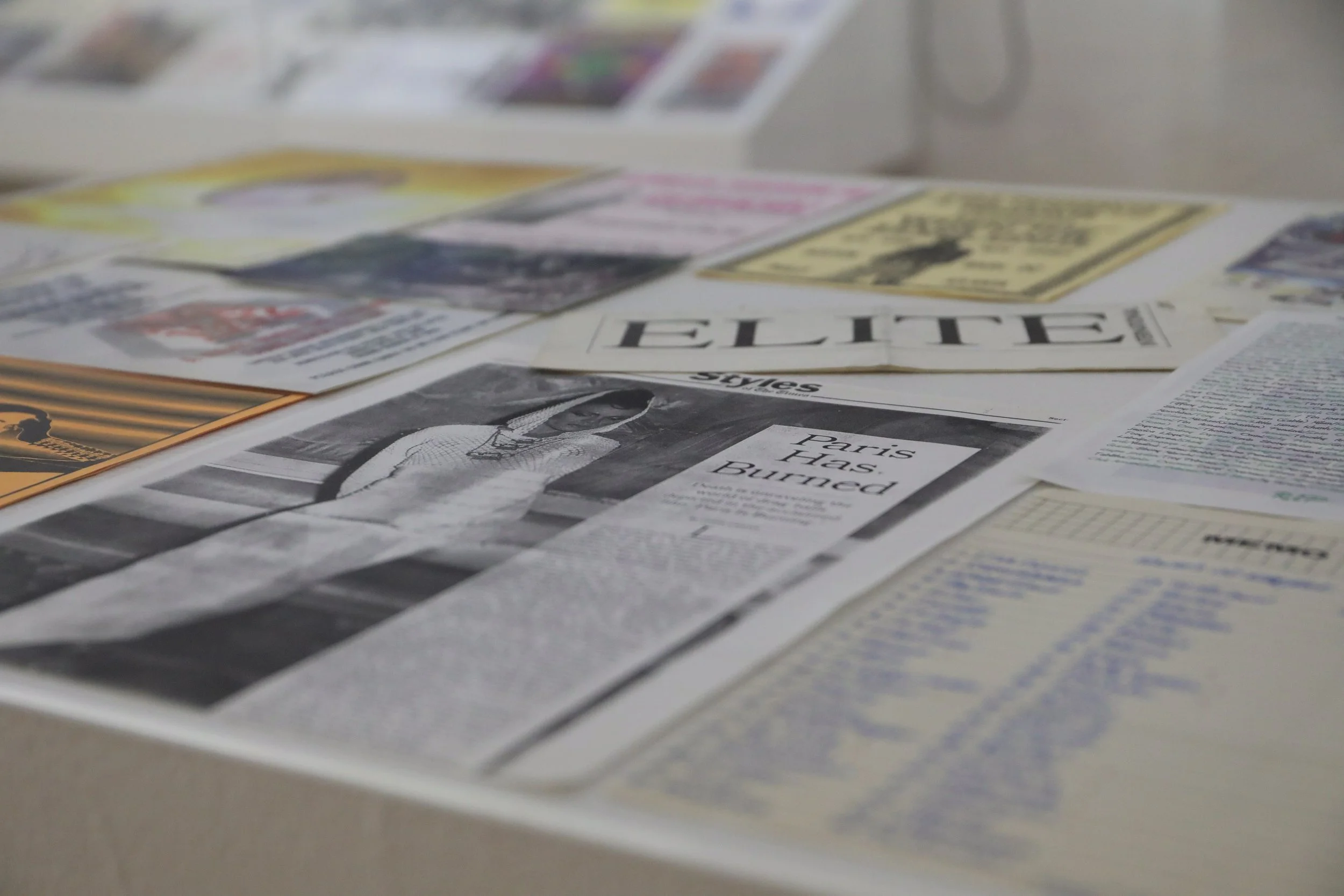Ballroom Culture and Community in “Legendary Looks”
The monumental exhibition Legendary Looks: Preserving Our Legacy contextualizes Ballroom culture within the lived experience of the performers—a perspective often missing from the extravagant, dramatic, and detail-oriented nature of the pluralistic medium. The “effects,” or costumes and gowns, shown in this survey are intricate, dynamic, structural works of art spanning fashion, industrial design, architecture, and sculpture, appearing to defy physics and experimenting with the furthest bounds of imagination. However, the most captivating aspect is knowing that at one time or another, these effects were activated by bodies that turned them into extensions of themselves—as living artworks. The exhibition, on view at City Lore, is within a three-part curatorial series, with the other two branches of the show at ArtsWestchester and Pioneer Works, spanning effects, film, illustration, photography, installation, and ephemera, all highlighting the creative ingenuity and resilience of the Ballroom scene.
For many, Ballroom culture entered the mainstream through Jennie Livingston’s 1990 documentary, Paris Is Burning. Although the documentary was groundbreaking in its focus, the fact of Livingston’s outsider status in Ballroom culture cannot be ignored, as the film has since been criticized as exploitative and appropriative.[1] While the perceived good and harm of the film will continue to be debated, the stories, opinions, and perspectives of its subjects were filtered through Livingston. Due to the confines of an hour-and-eleven-minute-long run time and its documentarian, their stories were edited down and diluted.
In clear contrast, Legendary Looks, curated by Legendary NYC Mother Jonovia Chase of Xclusive Lanvin, Icon International Mother Twiggy Pucci Garçon, and Icon Ballroom Hall of Famer Founder Michael Roberson Maison-Margiela, was purposefully ideated and executed with a consideration for the curators’ personal experiences, and, in turn, a greater sensitivity was exercised in creating a comprehensive and accurate depiction of the Ballroom community at large. Through a series of extensive interviews with seminal figures in the Ballroom community, the exhibition offers a nuanced definition and intimate depiction of Ballroom culture that not only highlights the extremes of extraordinary glamour and heartwrenching trauma, but also establishes an educational archive that prioritizes individual stories as a means of formulating a multifaceted portrait of the Ballroom scene from its origins through the present.
Unlike Livingston’s documentary, the interviews included in Legendary Looks are unredacted, making it impossible for any single viewer to leave with a finite narrative of any given community member. In this sense, the interviews mimic the multifaceted nature of each Ballroom community member, positing that no personality can be grasped or fully understood within a single sitting.
Ballroom arose from the efforts and creativity of working-class Black, Nuyorican, and Latine queer and trans folks in New York City during the 1960s. While it is often perceived as a rather insular community, in actuality, its reach and influence have bled into mainstream art, entertainment, and general culture. Language and aesthetics in fashion, film, visual art, music, and most modes of popular creative expression have either directly drawn inspiration from or been significantly influenced by the House Ballroom community.
With the dominance of social media—particularly short-form video streaming platforms, culture is consumed, appropriated, and iterated upon until its origins are effectively erased. Ballroom terminology like “shade,” “kiki,” and “reading” are now terms that one can readily expect to hear in the cafeteria at a middle school in the suburban Midwest. With the ubiquity of mobile phones and unrestricted access to the internet, performance is no longer a temporal act but a perpetual labor in bolstering and manufacturing one’s perceived identity online. Concepts of performance versus reality and perceptions of “authenticity” as a bar of success have become a dominating concern for celebrities to micro-influencers alike. Yet in a cyclical nature, as seen in 1990 with Madonna’s hit “Vogue,” the Ballroom scene has once again become a breeding ground for cultural consumption as outsiders pick and choose which identities they will commandeer to generate engagement.
The exhibition offers a concise and powerful rebuke of superficial interest by creating a wealth of context beyond the soundbites and clips that captivate attention at a glance. Through physical ephemera such as paper flyers that promoted balls and effects that were worn in competitions, Legendary Looks: Preserving our Legacy grounds Ballroom squarely in reality. From behind a screen, it is easy to flatten the complexity and depth of people as fodder for entertainment, but in the gallery of City Lore, it is apparent that Ballroom is not just an art form or mode of performance, but a way of life in organizing and building community.
Legendary Looks: Preserving our Legacy is on view at City Lore from July 25 through September 21, 2025.
[1] For further reading, see Michelle Parkerson, “Paris Is Burning: The Fire This Time,” Criterion, February 25, 2020.





